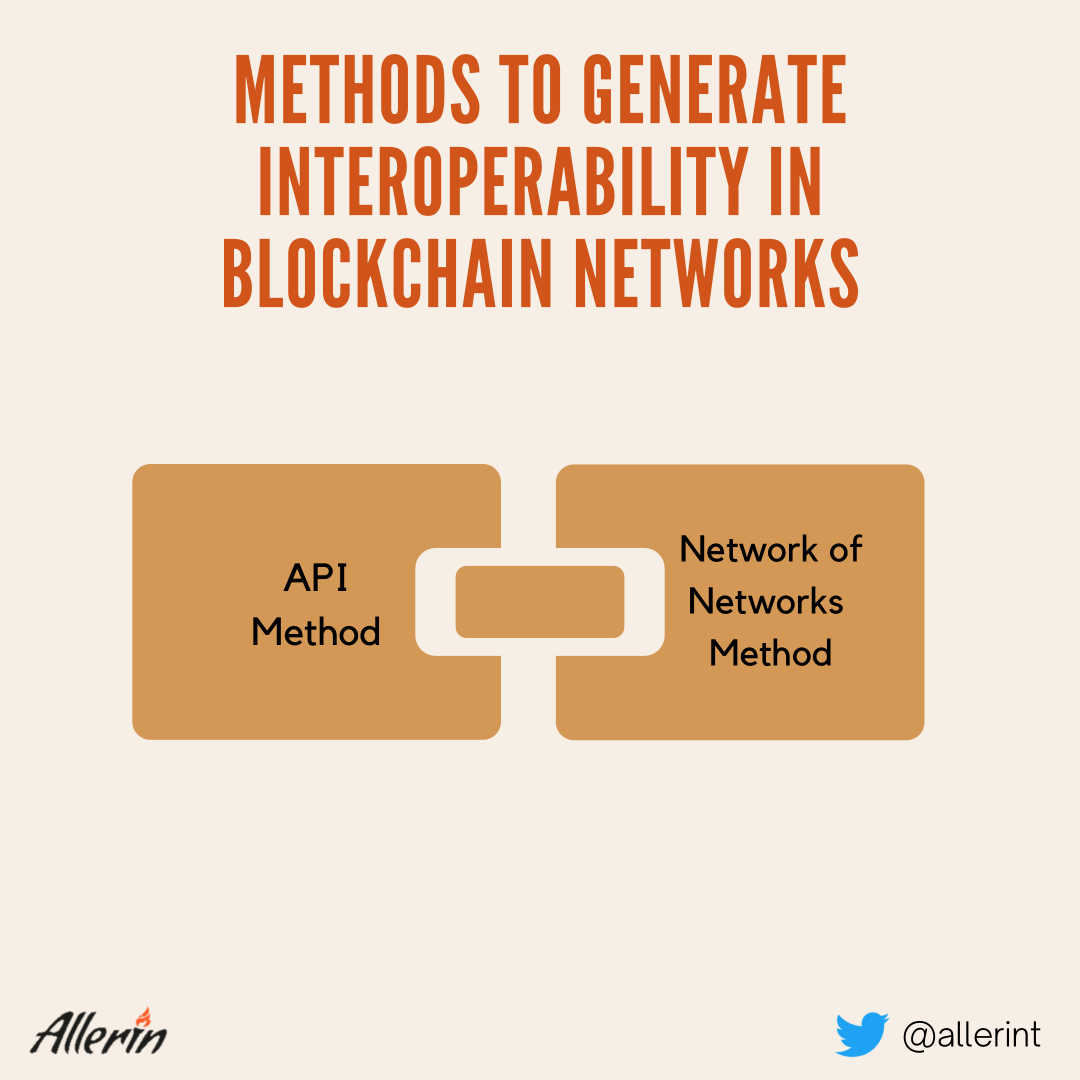Despite its growing relevance in multiple industries, blockchain is still a few steps away from becoming ubiquitous like AI and IoT.
An increase in blockchain interoperability can make it much more readily adoptable in business operations than it is now.
In recent years, the growing presence of blockchain-based applications across various industries has been nothing short of astounding. The global blockchain market is expected to continue its rapid growth and reach a valuation of about US$70 billion by 2027. The rise in blockchain usage does not come as a surprise, at least to researchers and workers belonging to the IT field. As a technology, blockchain has several unique traits that make it invaluable for certain areas such as cybersecurity and transaction management. Barring a few drawbacks, blockchain possesses all the qualities one expects from a top-notch data transfer and information storage-based technology.
Despite the positive qualities, individual blockchain tools and applications can end up being just that—individualistic—and disconnected from other blockchain-based tools and applications in a shared ecosystem. Technologies such as AI and IoT provide high levels of interoperability, that is, the ability of systems under the umbrella of a common technology platform to communicate and connect with one another in real-time, to take business operations to the next level in any organization. Similarly, interoperability is a requirement for blockchain-based systems too. Without that, blockchain adoption will continue to be segregated and restricted in their application and, as a result, unfit for wider business use.
The Need for Blockchain Interoperability
Most blockchain-based networks used in businesses are deployed for individual tasks such as recording transactions, facilitating payments, storing and trading valuable assets. While such blockchain networks and systems provide their usual veneer of reliability and security to such operations, the tasks themselves are isolated as two or more blockchain applications do not communicate and share data with each other to enhance the automation aspect of the process. As stated earlier, other centralized systems do a far greater job of integrating several tasks and operations in one ecosystem without the need for users to input data from time to time. IoT-based systems deliver end-to-end solutions to users.
As we know, automation is a huge part of business operations today. Top bosses in organizations today look for ways to get the most out of their employees and automation technology at the same time for optimal productivity and revenue generation. Technologies such as AI and IoT are already redefining the way automation is achieved for daily business functioning. So, if blockchain application developers need their creations to make a bigger mark in the corporate world, the applications will have to be designed in such a way that the individual systems work with each other and offer uninterrupted integration of capabilities to their users.
Interoperability in digital tools offers users greater ease of use that standalone systems cannot match. Users can benefit greatly from the autonomy that comes with such an interoperable network of systems. An example of blockchain interoperability is an artist being able to tokenize his or her creative art asset with the help of a blockchain-based application and also receive payments in cryptocurrency via another connected blockchain application.
As a concept, blockchain interoperability makes great business sense for organizations. However, a lack of standards for connected blockchain networks means that the concept of blockchain interoperability has not progressed greatly just yet. Moreover, individual blockchain applications such as Bitcoin, Stellar and Ethereum are continuously developed in different directions without the possibility of collaboration and connectivity being explored by developers. Recently, several projects have emerged that integrate two or more blockchain systems to provide interoperability in operations. For now, such initiatives are fairly limited in their scope and focus on specific types of blockchain networks only. However, the future seems to be ripe with possibilities regarding blockchain interoperability. Once interoperability becomes the norm in blockchain-based operations, the adoption of the technology would increase greatly in organizations across the board. Until then, more investments and efforts need to be pumped into the blockchain-related projects that seek to enhance the interoperability aspect of blockchain applications and tools, as that will speed the process.
How Interoperability is Achieved in Blockchain
Blockchain interoperability can be a challenging task for developers to face. Currently, there are only two ways in which it can be achieved: a) Mashed APIs method b) Network of networks method
API Method
With this approach, blockchain interoperability is achieved by facilitating the transfer of data payloads through Application Programming Interfaces (APIs). For this purpose, such APIs are specially designed. The 'mashed' API method involves the designing of APIs to allow individual blockchain systems to communicate with one another. The use of APIs to generate blockchain interoperability does not necessitate the need for developers to have extensive programming skills.
However, this method comes with its share of drawbacks. APIs are flexible to use but, due to the lack of a definite governance structure, they can be unfavorable choices for generating blockchain interoperability, and organizations will find it challenging to adhere to compliance regulations even as blockchain interoperability is achieved. In addition to this, APIs will need to integrate with blockchain platforms on a one-to-one basis. This factor causes the interoperability to be inefficient. Apart from that, the involvement of APIs in the process could also cause authentication deficiencies while data is transferred from one blockchain platform to another. As a result of these factors, this method only can offer a limited percentage of interoperability in blockchain networks.
Network of Networks Method
This is a vastly superior way to build interoperability in blockchain networks as compared to the API method. The network of networks method allows blockchain developers to make the interoperability process highly efficient and scalable for future use. Additionally, this method also establishes industry standards apart from allowing blockchain systems to identify if other blockchain networks are present to converge and communicate.
As we know, a blockchain network contains multiple network connections. Blockchain developers can use this network architecture to digitally connect blockchain networks and create interoperability possibilities across different applications. This process results in the creation of blockchain network hubs that transmit data through dedicated communication channels. The network of networks method reduces the complexity of blockchain interoperability. Moving forward, one can expect more methods to be discovered for the effective configuration of blockchain applications and networks.
Existing Blockchain Interoperability Projects
As stated earlier, blockchain developers around the world are working on blockchain projects that consist of multiple systems communicating with each other and, as a result, ensuring greater automation and connectivity in operations. Some of the projects include:
- The Switzerland-based organization Cosmos has developed its own Cosmos SDK platform to ensure blockchain interoperability amongst different applications and systems. A contract-based service provider, Cosmos provides blockchain solutions for optimal interoperability and scaling capabilities in blockchain systems. Cosmos' blockchain architecture uses a 'hub-and-spoke' system to create a series of network 'spokes' that connect to a central hub to coordinate multiple blockchain systems. Using their blockchain architecture, Cosmos aims to create an 'Internet of Blockchains (IoB)' that allows individual applications to 'talk' to each other in a decentralized way.
- Like Cosmos, Polkadot blockchain also aims to achieve greater connectivity and scalability in blockchain networks. A multi-chain technology initiative, Polkadot involves multiple 'parachains' with distinctive characteristics. The blockchain architecture allows transactions to be spread over large distances as several chains are connected in the network. While the interoperability levels are high, the data security levels are maintained optimally as well. Polkadot blockchain seeks to create and maintain consistently high levels of interoperability between private chains, public networks and other platforms. Additionally, the blockchain services provider also aims to maintain scalability without compromising on governance.
- Blocknet is a decentralized blockchain-based network that boosts real-time interoperability via smoother inter-chain communication and data transfer. The organization aims to 'change the way blockchain systems are perceived by users.' Basically, Blocknet aims to create a unique decentralized (yet interoperable) blockchain that will offer the reliability of traditional blockchain tools. The organization also intends to create a cross-platform infrastructure for organizations.
- Another popular name for developing blockchain solutions that are highly interoperable is Wanchain. The organization provides ultra-secure multi-party computing and blockchain solutions for users. Wanchain boosts interoperability and cross-chain capabilities by using extensive research results found in cryptographic theories. Wanchain provides a proprietary protocol to connect clients of all types (public, private and consortium).
Organizations around the world may have reservations about using blockchain-based systems for their work operations and automation in general. Often, interoperability is one of the most important factors considered by organizations while implementing blockchain-based systems. So, blockchain systems that offer interoperability can completely drive away any apprehensions from the minds of business owners.




Leave your comments
Post comment as a guest